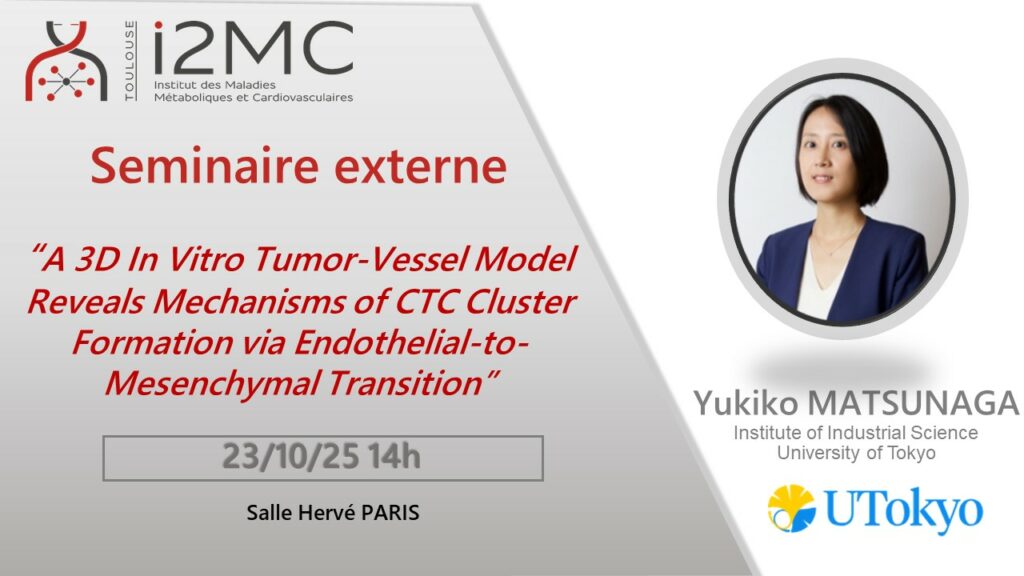A 3D In Vitro Tumor-Vessel Model Reveals Mechanisms of CTC Cluster Formation via Endothelial-to-Mesenchymal Transition
Jeudi 23 Octobre 14h Salle Hervé Paris

Prof Matsunaga’s lab has been focusing on bottom-up tissue engineering using cells, proteins, and biopolymers as building blocks by unifying biomaterial synthesis, microfabrication and cell biology. Her goal is to develop controllable in vitro tissue models able to “visualize” the microenvironment of tissues from healthy to disease state at the cellular and tissue level. This approach serves as a powerful tool for mechanistic understanding of the disease and drug discovery
Abstract relative à sa présentation :
Circulating tumor cell (CTC) clusters, which are often found in the blood of patients with high-grade tumors, are strongly associated with metastasis and poor prognosis. However, the mechanisms by which cancer cell clusters invade blood vessel barriers remain unclear. In this study, we developed a three-dimensional (3D) in vitro model to visualize tumor intravasation by positioning tumor organoids with distinct genetic backgrounds around engineered microvessels composed of luminal structure of endothelial cells. Our system successfully captured key steps of intravasation, including collective migration toward microvessels, vessel co-option, and the release of CTC clusters—an invasion mechanism not previously reported. Moreover, we identified that elevated transforming growth factor-β (TGF-β) and activin expression in endothelial cells played a critical role in facilitating intravasation, which was associated with endothelial-to-mesenchymal transition (EndoMT). This 3D model provides a valuable platform for developing clinical intervention strategies targeting CTCs and tumor metastasis.

